Kaitlyn Hickman
Program Operations Lead
SpinSys
Database migration is a pivotal undertaking that involves transferring data from one database system to another. Ensuring data quality during this process is crucial for maintaining accuracy, consistency, and reliability. In this blog post, we’ll explore a comprehensive approach to data quality validation and testing during database migration. Additionally, we’ll discuss how leveraging powerful database migration tools can facilitate the implementation of these best practices.
Best Practices for Data Quality Validation and Testing Using Database Migration Tools:
Data Profiling and Analysis:
Prior to initiating the migration process, conduct in-depth data profiling and analysis. Database migration tools often incorporate profiling features, allowing you to understand the structure, relationships, and patterns within the source data. This knowledge forms the foundation for a well-informed migration strategy.
Best Practices for Data Quality Validation and Testing Using Database Migration Tools:
Data Profiling and Analysis:
Prior to initiating the migration process, conduct in-depth data profiling and analysis. Database migration tools often incorporate profiling features, allowing you to understand the structure, relationships, and patterns within the source data. This knowledge forms the foundation for a well-informed migration strategy.
Data Mapping and Transformation:
Document data mapping comprehensively, outlining transformations, conversions, and business rules. Many migration tools integrate transformation capabilities directly, streamlining the process and ensuring consistency in data manipulation.
Data Sampling and Validation Rules:
Employ data sampling to test a representative subset of data. Define validation rules encompassing data type checks, referential integrity constraints, and business logic validations. Leverage migration tools to enforce these rules, ensuring data quality at every stage.
Automated Testing and Error Handling:
Migration tools can seamlessly integrate automated testing scripts. These scripts encompass data validation queries, integrity checks, and comparisons against source data. Automated testing accelerates the validation process and mitigates the potential for human error. Additionally, these tools offer built-in error handling and logging mechanisms for efficient issue resolution.
User Acceptance Testing (UAT) and Documentation:
Engage end-users in UAT to evaluate migrated data from a business perspective. Migration tools can facilitate user access and feedback collection and even simulate real-world scenarios. Utilize these tools to document the entire migration process, ensuring transparency and accountability.
Leveraging MDACA Tools for Data Quality Testing:
Database migration tools serve as a catalyst for implementing data quality validation practices:
- Validation Rules and Checks: Leverage migration tools to enforce validation rules, ensuring data integrity, accuracy, and adherence to business rules.
- Automated Testing and Error Handling: These tools seamlessly integrate with testing frameworks, automating validation processes and logging errors for effective troubleshooting.
- Documentation and Version Control: Utilize version control systems to manage migration scripts, and employ the tools’ documentation features to track changes and annotate critical steps.
The success of a database migration relies on the integration of data quality validation and testing. By adhering to best practices like data profiling, automated testing, and user acceptance testing, combined with the capabilities of modern database migration tools, you can navigate the migration journey with confidence. The synergy between these practices and tools not only streamlines the migration process but also bolsters data accuracy and consistency, resulting in a seamless transition to a new database environment.



